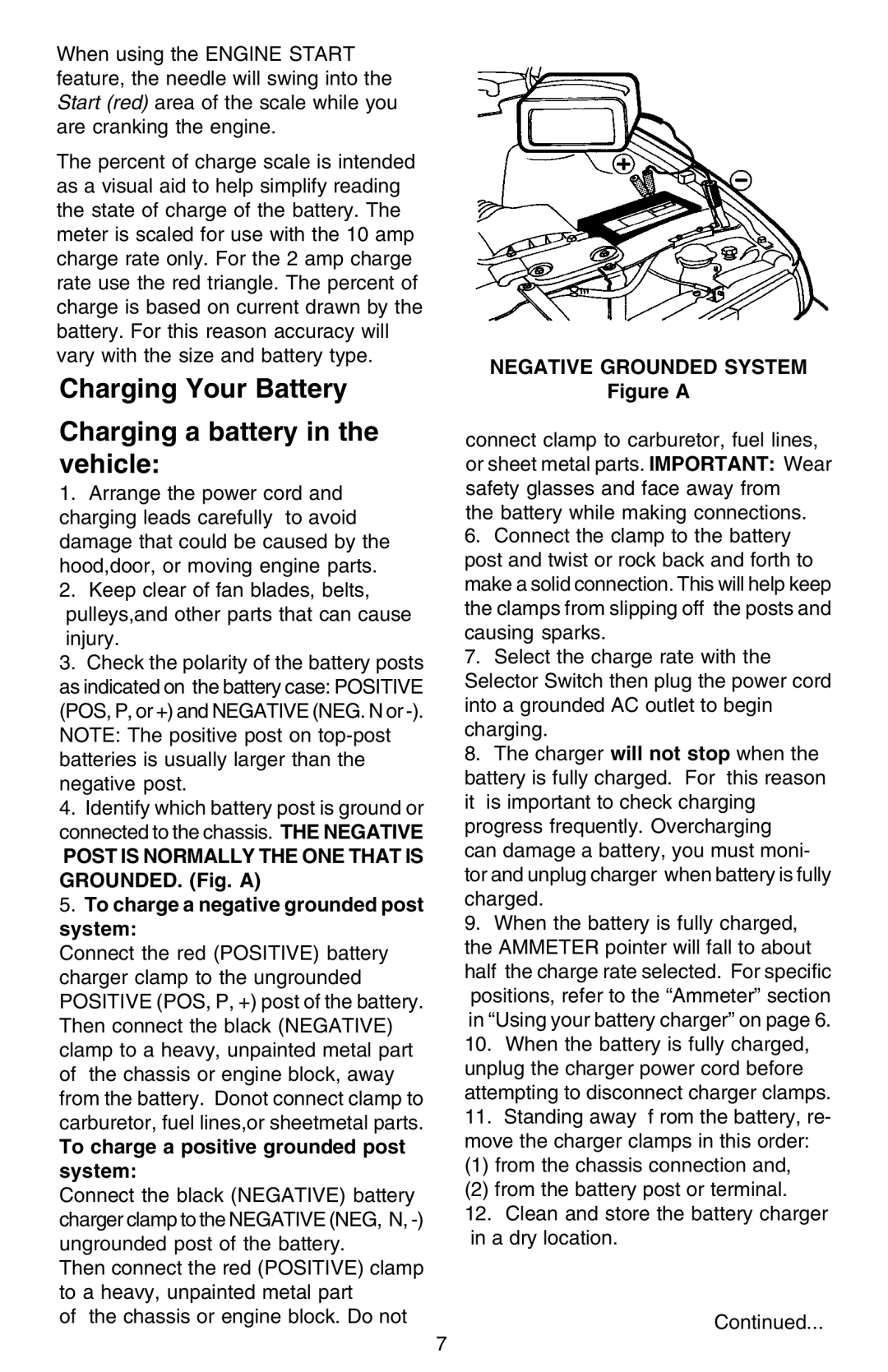
When using the ENGINE START feature, the needle will swing into the Start (red) area of the scale while you are cranking the engine.
The percent of charge scale is intended as a visual aid to help simplify reading the state of charge of the battery. The meter is scaled for use with the 10 amp charge rate only. For the 2 amp charge rate use the red triangle. The percent of charge is based on current drawn by the battery. For this reason accuracy will vary with the size and battery type.
Charging Your Battery
Charging a battery in the vehicle:
1.Arrange the power cord and charging leads carefully to avoid damage that could be caused by the hood,door, or moving engine parts.
2.Keep clear of fan blades, belts, pulleys,and other parts that can cause injury.
3.Check the polarity of the battery posts as indicated on the battery case: POSITIVE (POS, P, or +) and NEGATIVE (NEG. N or
4.Identify which battery post is ground or connected to the chassis. THE NEGATIVE
POST IS NORMALLY THE ONE THAT IS GROUNDED. (Fig. A)
5.To charge a negative grounded post system:
Connect the red (POSITIVE) battery charger clamp to the ungrounded POSITIVE (POS, P, +) post of the battery. Then connect the black (NEGATIVE) clamp to a heavy, unpainted metal part of the chassis or engine block, away from the battery. Donot connect clamp to carburetor, fuel lines,or sheetmetal parts.
To charge a positive grounded post system:
Connect the black (NEGATIVE) battery charger clamp to the NEGATIVE (NEG, N,
Then connect the red (POSITIVE) clamp to a heavy, unpainted metal part
of the chassis or engine block. Do not
NEGATIVE GROUNDED SYSTEM
Figure A
connect clamp to carburetor, fuel lines, or sheet metal parts. IMPORTANT: Wear safety glasses and face away from
the battery while making connections.
6.Connect the clamp to the battery post and twist or rock back and forth to make a solid connection. This will help keep the clamps from slipping off the posts and causing sparks.
7.Select the charge rate with the Selector Switch then plug the power cord into a grounded AC outlet to begin charging.
8.The charger will not stop when the battery is fully charged. For this reason it is important to check charging progress frequently. Overcharging
can damage a battery, you must moni- tor and unplug charger when battery is fully charged.
9.When the battery is fully charged, the AMMETER pointer will fall to about half the charge rate selected. For specific positions, refer to the “Ammeter” section in “Using your battery charger” on page 6.
10.When the battery is fully charged, unplug the charger power cord before attempting to disconnect charger clamps.
11.Standing away f rom the battery, re- move the charger clamps in this order:
(1) from the chassis connection and,
(2) from the battery post or terminal.
12.Clean and store the battery charger in a dry location.
Continued...
SAFETY
OPERATION
MAINTENANCE TROUBLESHOOTING
PARTS
7
